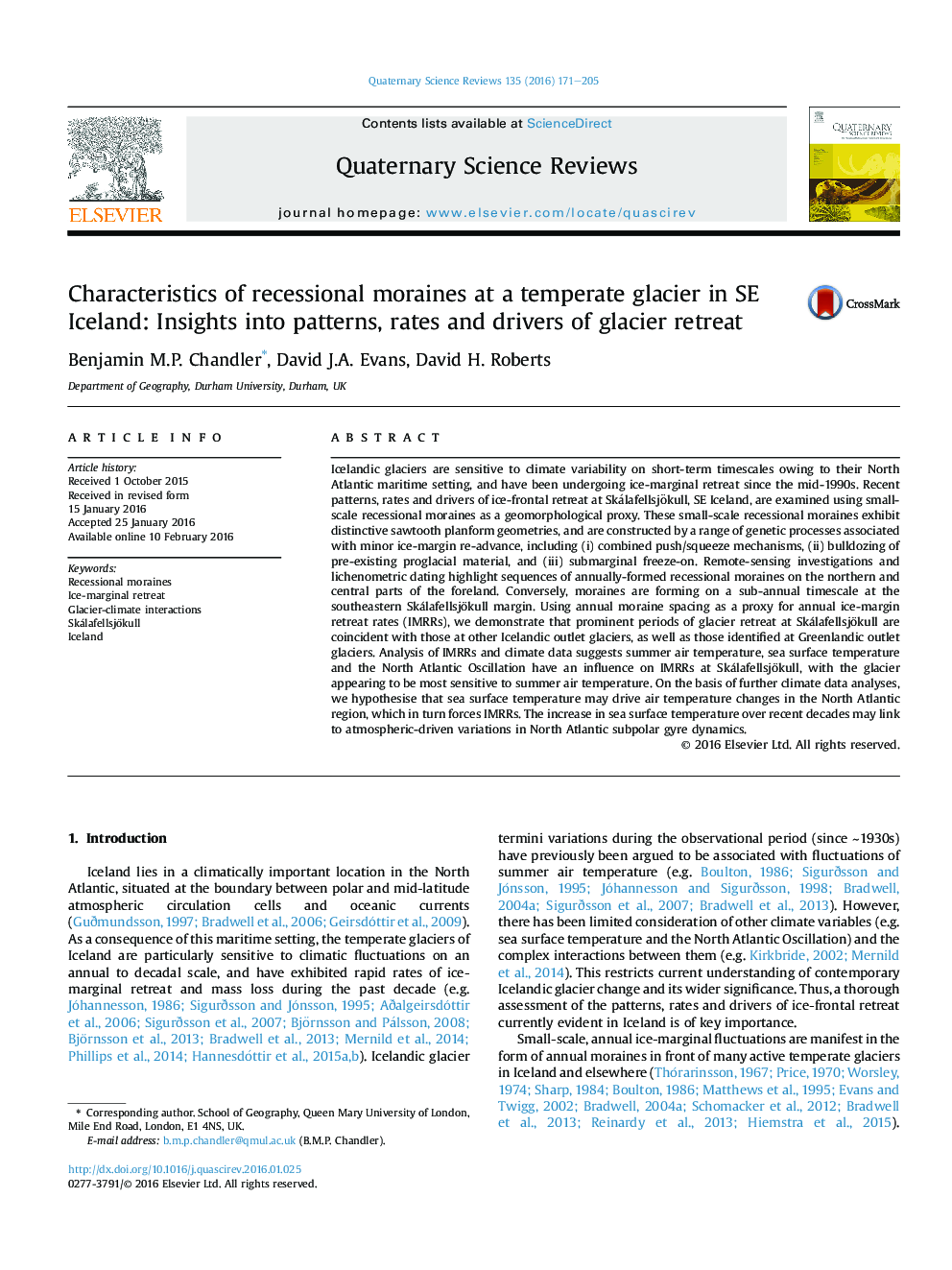| کد مقاله | کد نشریه | سال انتشار | مقاله انگلیسی | نسخه تمام متن |
|---|---|---|---|---|
| 4736082 | 1640800 | 2016 | 35 صفحه PDF | دانلود رایگان |
• Annual moraines were used to examine rates and drivers of recent glacier retreat.
• The moraines formed by seasonally-driven processes (push, squeeze and freeze-on).
• Retreat rates were established for three periods using annual moraine spacing.
• The retreat periods correspond with those elsewhere in Iceland and in SE Greenland.
• Analyses show temporal coincidence of retreat and elevated summer temperatures.
Icelandic glaciers are sensitive to climate variability on short-term timescales owing to their North Atlantic maritime setting, and have been undergoing ice-marginal retreat since the mid-1990s. Recent patterns, rates and drivers of ice-frontal retreat at Skálafellsjökull, SE Iceland, are examined using small-scale recessional moraines as a geomorphological proxy. These small-scale recessional moraines exhibit distinctive sawtooth planform geometries, and are constructed by a range of genetic processes associated with minor ice-margin re-advance, including (i) combined push/squeeze mechanisms, (ii) bulldozing of pre-existing proglacial material, and (iii) submarginal freeze-on. Remote-sensing investigations and lichenometric dating highlight sequences of annually-formed recessional moraines on the northern and central parts of the foreland. Conversely, moraines are forming on a sub-annual timescale at the southeastern Skálafellsjökull margin. Using annual moraine spacing as a proxy for annual ice-margin retreat rates (IMRRs), we demonstrate that prominent periods of glacier retreat at Skálafellsjökull are coincident with those at other Icelandic outlet glaciers, as well as those identified at Greenlandic outlet glaciers. Analysis of IMRRs and climate data suggests summer air temperature, sea surface temperature and the North Atlantic Oscillation have an influence on IMRRs at Skálafellsjökull, with the glacier appearing to be most sensitive to summer air temperature. On the basis of further climate data analyses, we hypothesise that sea surface temperature may drive air temperature changes in the North Atlantic region, which in turn forces IMRRs. The increase in sea surface temperature over recent decades may link to atmospheric-driven variations in North Atlantic subpolar gyre dynamics.
Journal: Quaternary Science Reviews - Volume 135, 1 March 2016, Pages 171–205
